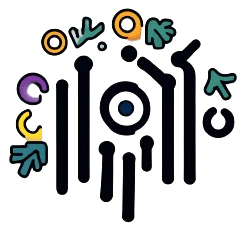Conventional Communication Tools in Urban Design vs. Miniature as a Communication Medium
| Criterion | Conventional Communication Tools in Urban Design | Miniature as a Communication Medium |
|---|---|---|
| Definition | Use of traditional tools like blueprints, sketches, and 3D models to communicate urban design concepts. | Use of physical miniatures to represent urban design concepts at a smaller scale. |
| Visualization Accuracy | High accuracy, but dependent on the quality of drawings and models; may require interpretation by experts. | Highly accurate representation, allowing for direct visual and spatial understanding, often perceived more intuitively by non-experts. |
| Audience Engagement | Limited engagement, particularly for non-professional audiences; often abstract. | High engagement, as miniatures offer a tangible and interactive experience that is easier to comprehend. |
| Detail Representation | Can represent significant detail, but may lose clarity in complex projects. | Allows for intricate detail, particularly effective in showing spatial relationships and textures. |
| Scale Flexibility | Can be scaled to various levels, though larger scales may require multiple sheets or models. | Easily scaled down, making it practical for large projects to be understood in a compact form. |
| Interactivity | Limited interactivity; primarily visual and requires explanation from experts. | Highly interactive; stakeholders can interact directly with the miniature, leading to more effective communication. |
| Cost and Resource Intensity | Generally lower upfront costs, but can be resource-intensive over time (e.g., multiple revisions). | Higher initial cost due to the need for precise fabrication, but potentially lower long-term costs with reusable miniatures. |
| Time Efficiency | Faster to produce, especially for initial concepts; revisions can be time-consuming. | Slower to produce initially due to the fabrication process, but allows for rapid, intuitive understanding once created. |
| Technological Requirements | Requires technical drawing skills and knowledge of CAD for advanced models; technology-heavy for 3D models. | Requires access to advanced manufacturing tools like 3D printers and CNC machines; high technological dependence. |
| Collaboration and Feedback | Facilitates collaboration among professionals; feedback from non-experts may be limited by their understanding. | Enhances collaboration across all stakeholders, including non-experts, by providing a tangible reference point. |
| Cultural and Social Considerations | May not effectively convey cultural nuances or social context without supplementary explanation. | Can incorporate cultural and social elements more naturally, allowing for a richer, more contextual communication. |
| Sustainability Considerations | Traditional methods may involve significant material waste, especially with multiple revisions. | Offers potential for sustainable practices through the use of recyclable materials and minimal waste in the fabrication process. |
| Applicability in Complex Projects | Effective but may become cumbersome and less effective in very complex urban designs. | Particularly effective in complex projects where spatial relationships are critical; miniatures provide a clear, comprehensive view. |
| Long-term Utility | Often limited to specific projects; may become obsolete with project completion. | High utility beyond initial use; miniatures can be repurposed for future projects or as educational tools. |
| Innovative Potential | Limited by conventional methods and tools; innovation often constrained by established practices. | High potential for innovation in communication, particularly with advancements in miniature fabrication technologies. |
Miniatures offer a more interactive, accurate, and engaging communication medium in urban design, especially for non-expert stakeholders, despite higher initial costs and time requirements.
